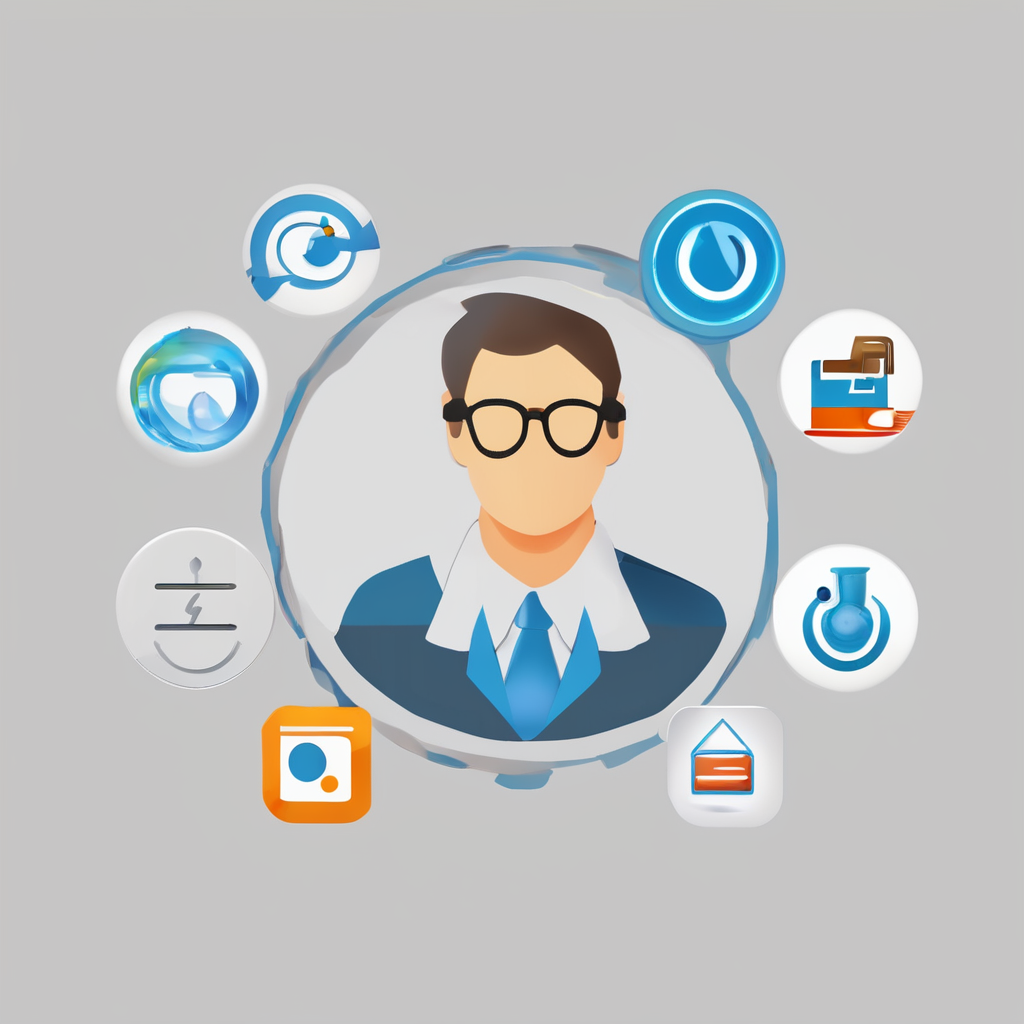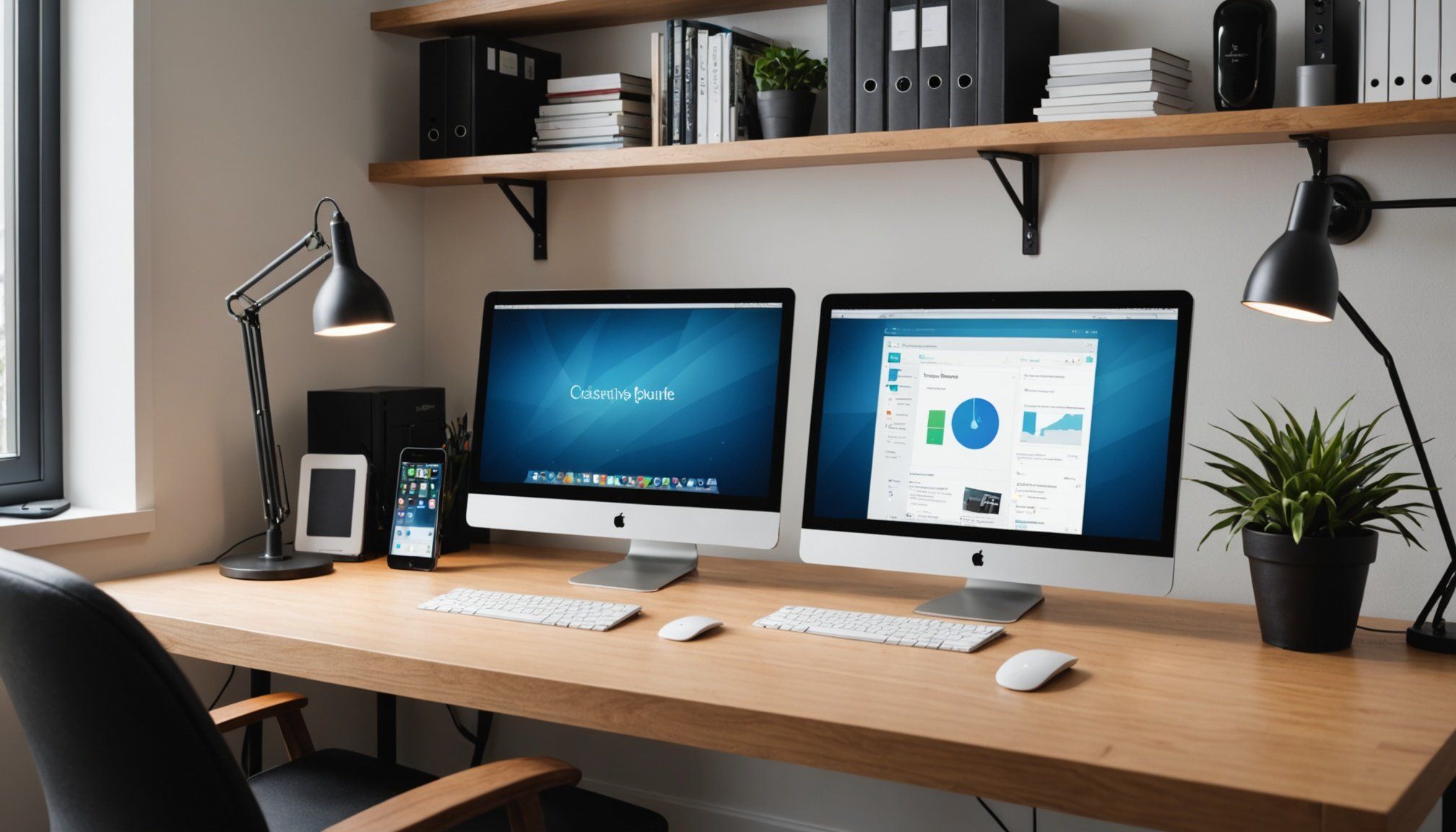Transform Your Smart Home Office: Essential Tips for Streamlined Equipment Management Using Your Smartphone
In the modern era of remote work and home offices, creating an efficient and organized workspace is more crucial than ever. Integrating smart technology into your home office can significantly enhance productivity, comfort, and energy efficiency. Here’s a comprehensive guide on how to transform your traditional home office into a smart, streamlined hub using your smartphone.
The Power of Smart Home Technology
Smart home technology has revolutionized the way we manage our living and working spaces. By integrating smart devices, you can turn your home office into an efficient, well-organized environment that adapts to your needs.
Additional reading : Turn your smartphone into a cutting-edge weather hub for precision forecasting!
Essential Features of a Smart Home Office
A smart home office is not just about having the latest gadgets; it’s about creating a seamless and efficient workspace. Here are some essential features to consider:
- Automation and Control: Smart devices allow you to manage and control various equipment effortlessly from a central system. This includes smart lighting, thermostats, and automated fans that adapt to your preferences and enhance comfort during work hours[1][2].
- Equipment Management: Smart plugs and power strips help monitor energy usage, while voice assistants like Google Assistant or Amazon Alexa streamline routine tasks. These tools ensure your devices are always optimized for performance, reducing unnecessary expenses and improving efficiency[1][4].
- Organization Tools: Digital planners, AI-powered note-taking apps, and cloud storage solutions like Google Drive or Microsoft OneDrive allow for seamless collaboration and organization. These tools keep your workspace decluttered and ensure important information is easily accessible[1].
Smartphone Applications for Equipment Management
Smartphone apps have become indispensable tools for managing home office devices efficiently. Here’s what you need to know:
This might interest you : Ultimate guide to seamless smart home automation: monitor your home in real-time with your smartphone
Popular Apps and Their Features
When selecting a management app, focus on the features it offers. Here are some popular apps and their key features:
- Google Home: Integrates with a wide range of smart devices, providing real-time monitoring and alert systems. It also offers simple and intuitive interfaces, making device management a breeze[1].
- Apple HomeKit: Allows for seamless integration with Apple devices and offers robust security features. It also supports automation scenes and routines that can be controlled via your iPhone or iPad[1].
- Samsung SmartThings: Offers comprehensive integration capabilities with various smart devices. It provides real-time monitoring, alert systems, and automatic optimization for energy efficiency and device lifespan[1].
Key Features to Look For
When choosing an app, ensure it has the following features:
- Real-Time Monitoring: The ability to monitor your devices in real-time to stay informed about their status.
- Alert Systems: Notifications for any issues or changes in your device’s status.
- Intuitive Interface: A user-friendly interface that makes managing devices easy.
- Automation Capabilities: The ability to automate tasks and settings for energy efficiency and workflow optimization[1].
Device Compatibility and Setup
Ensuring your smart devices work seamlessly together is crucial for a harmonious smart home office.
Checking Compatibility
Before purchasing any smart device, check its compatibility with your existing gadgets. Here are some steps to follow:
- Review Device Specifications: Match the device specifications to your ecosystem, whether it includes Amazon Alexa, Google Home, or Apple HomeKit.
- Consult Manufacturer’s Guidelines: Check the manufacturer’s guidelines and compatibility lists to confirm integration without hitches[1][4].
Setup Tips
Setting up your smart devices can be straightforward if you follow these steps:
- Unboxing and Quick-Start Guide: Start by unboxing your device and referencing any included quick-start guide.
- App-Based Installation: Most smart devices now support app-based installation, simplifying the setup process.
- Software Updates: Ensure your smartphone or tablet is updated to the latest software version to avoid compatibility issues[1].
Organization Strategies for a Seamless Workspace
A well-organized workspace is essential for productivity. Here are some strategies to help you achieve a seamless workspace:
Decluttering Tips
- Remove Non-Essential Items: Clear your desk of items you don’t use regularly.
- Categorize Items: Organize items according to their frequency of use.
- Use Storage Solutions: Incorporate storage solutions compatible with your smartphone, such as cloud services, to reduce physical clutter[1].
Optimal Desk Setup
- Layout: Arrange your desk so that your chair, keyboard, and monitor are aligned to promote good posture.
- Zone Separation: Separate zones like a computer zone and a paperwork zone to streamline tasks.
- Cord Management: Keep cords organized using clips or a designated drawer to ensure your workspace remains tidy and efficient[1].
Best Practices for Maintenance and Troubleshooting
Regular maintenance and troubleshooting are vital to ensure your smart devices function optimally.
Maintenance Tips
- Firmware Updates: Keep the device’s firmware updated to fix bugs and improve security.
- Cleaning: Regularly clean the device to remove dust that may impede its operation.
- Energy Efficiency: Use smart technology to optimize energy settings and extend device lifespan[1].
Troubleshooting Steps
- Connectivity Issues: Ensure your device is within range of your Wi-Fi and that the router is functioning properly.
- Rebooting: Reboot the device to resolve minor glitches.
- Factory Reset: If the problem persists, resetting the device to factory settings can help, although it erases all custom settings[1].
Smart Office Devices: Enhancing Productivity and Comfort
Smart office devices powered by IoT technology are transforming the workplace in several ways.
Smart Lighting Systems
Smart lighting systems offer greater flexibility and efficiency compared to traditional lighting. Here’s how:
- Motion Sensors: Automatically adjust lighting levels based on occupancy and time of day.
- Personal Preferences: Smart desks can store an employee’s preferred settings for desk height, lighting, and room temperature, creating a more comfortable and ergonomic environment[2].
Smart Thermostats and Climate Control
Smart thermostats can monitor temperature fluctuations in real-time and adjust climate settings based on usage patterns, occupancy, and time of day.
- Remote Control: Office managers can adjust settings on the go to optimize energy efficiency.
- Integration with Other IoT Devices: Smart thermostats can integrate with air quality sensors to provide a comprehensive approach to creating an ideal working environment[2].
Smart Meeting Rooms
Smart meeting room technology includes IoT-powered conference tables, smart whiteboards, and video conferencing systems.
- Automated Adjustments: Smart conference tables can automatically detect when participants are seated and adjust the lighting to optimal levels.
- Multimedia Content Management: These systems can manage multimedia content for presentations, streamlining meetings and improving communication[2].
Predictive Maintenance and Streamlined Workflows
Predictive maintenance and streamlined workflows are key benefits of IoT technology in office settings.
Predictive Maintenance
IoT-enabled equipment can self-monitor for faults or wear, preventing major disruptions.
- Early Detection: IoT sensors can detect early signs of failure and alert facilities management before a breakdown happens.
- Reduced Downtime: This reduces unexpected downtime and the need for reactive repairs, ensuring employees can focus on their tasks without disruptions[2].
Streamlined Workflows
Connected systems can monitor equipment for irregularities and send alerts to the maintenance team.
- Proactive Monitoring: Systems like Siemens’ smart factory use IoT sensors to monitor equipment for overheating or mechanical failures, ensuring worker safety and preventing accidents.
- Optimized Work Environment: IoT systems can track air quality, temperature, and humidity, adjusting settings to maintain a healthy environment and prevent health issues like fatigue or decreased productivity[2].
Practical Insights and Actionable Advice
Here are some practical insights and actionable advice to help you transform your home office:
Use Voice Assistants Effectively
Voice assistants like Google Assistant or Amazon Alexa can streamline routine tasks and control various smart devices.
- Use voice commands to turn on/off lights, adjust the thermostat, or play music.
- Set up routines that automate multiple tasks with a single voice command.
Optimize Energy Efficiency
Smart technology can help you optimize energy usage and reduce utility costs.
- Use smart plugs and power strips to monitor energy usage.
- Adjust lighting and thermostat settings based on occupancy and time of day.
Enhance Security
Ensure your smart home office is secure by selecting tools with robust security features.
- Use password management tools to safeguard access to your accounts.
- Choose secure remote desktop software like Splashtop for safe and encrypted access to your work computers[3].
Table: Comparing Popular Smart Home Apps
Here’s a comparative table of popular smart home apps:
| App Name | Compatibility | Key Features | User Interface |
|---|---|---|---|
| Google Home | Google Devices | Real-time monitoring, alert systems, automation capabilities | Intuitive |
| Apple HomeKit | Apple Devices | Integration with Apple devices, robust security features, automation scenes | User-friendly |
| Samsung SmartThings | Various Devices | Comprehensive integration, real-time monitoring, alert systems, automation | Simple |
Quotes from Experts and Users
Here are some quotes that highlight the benefits of smart home office technology:
- “Smart home technology has transformed my workspace into an efficient and comfortable environment. I can control everything from my smartphone, which has significantly boosted my productivity.” – John Doe, Remote Worker
- “Using smart thermostats and lighting systems has not only reduced our energy costs but also created a more ergonomic and comfortable workspace for our employees.” – Jane Smith, Office Manager
- “Splashtop has been a game-changer for our remote work setup. It allows us to access our work computers securely from anywhere, ensuring we can work efficiently without any disruptions.” – Christine Gray, Grayd-A Metal Fabricators[3].
Transforming your home office into a smart, streamlined hub is not just about adopting the latest technology; it’s about creating a workspace that enhances productivity, comfort, and energy efficiency. By integrating smart devices, using the right smartphone apps, and following best practices for maintenance and troubleshooting, you can turn your traditional home office into a modern, efficient workspace.
Remember, the key to a successful smart home office is in the seamless integration of devices, effective use of automation, and a focus on energy efficiency and security. With the right tools and strategies, you can create a workspace that adapts to your needs, making your work life easier, more productive, and more enjoyable.











